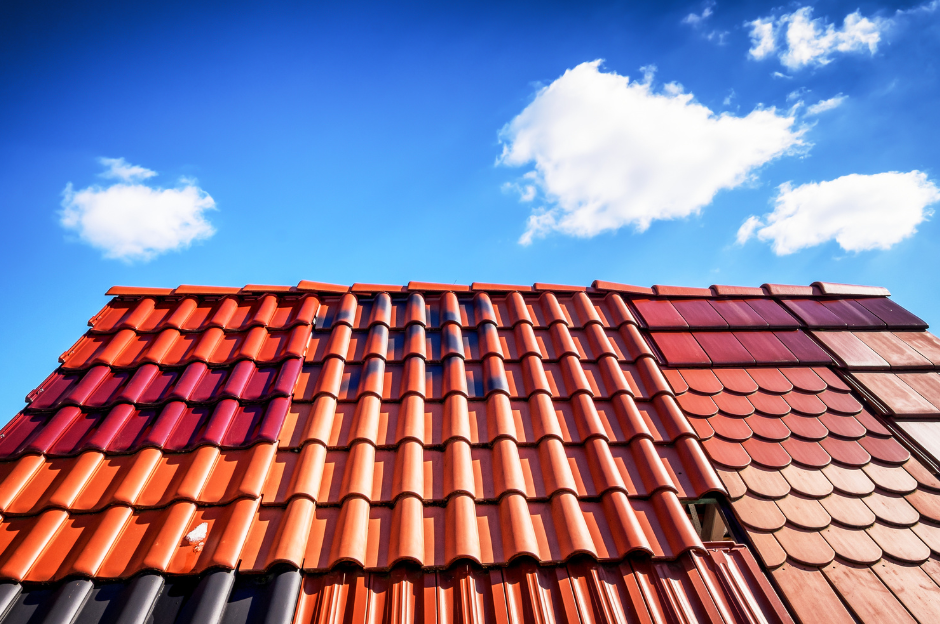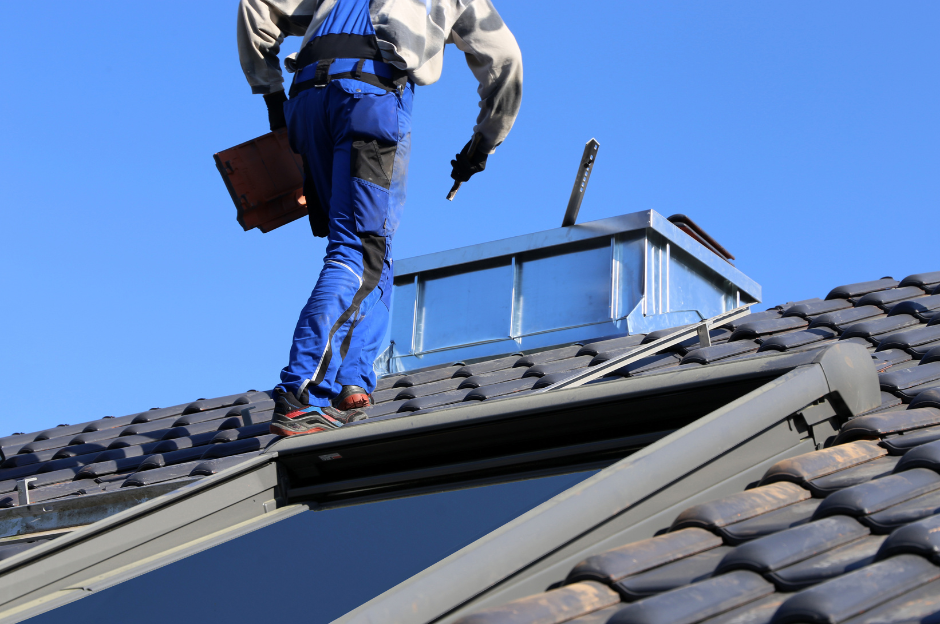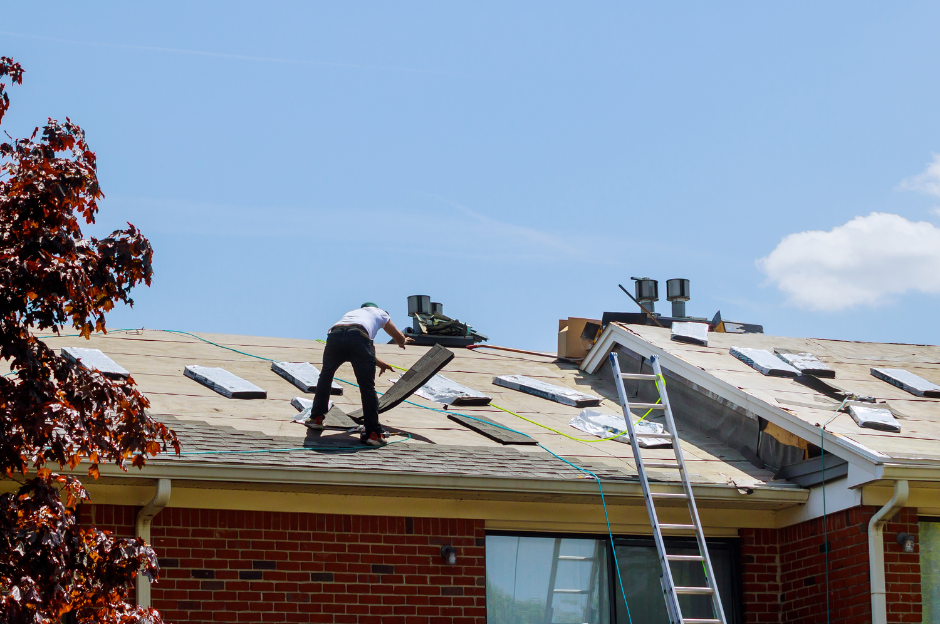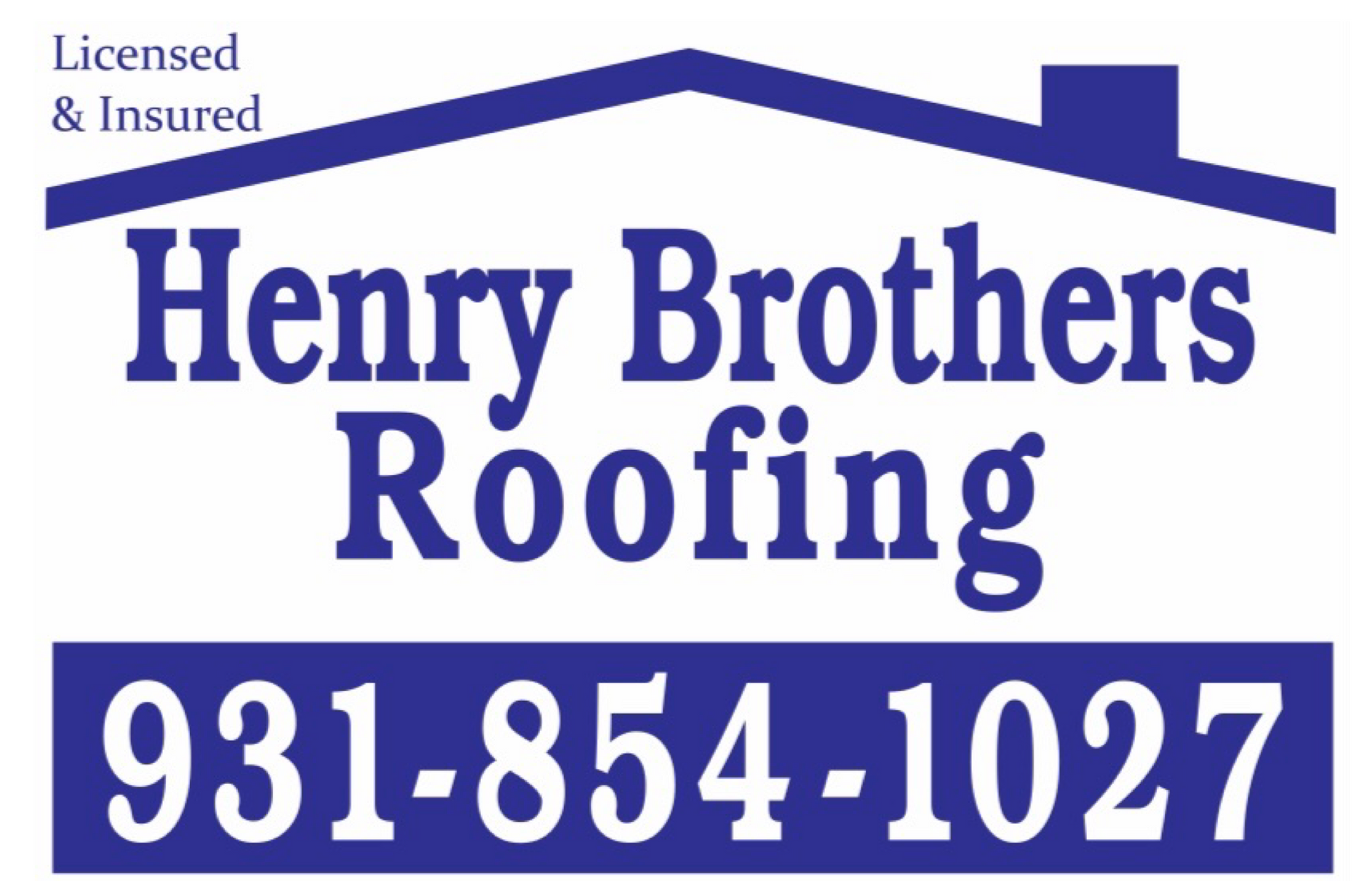Roofing Trends in 2024: Elevating Aesthetics and Functionality in Residential and Commercial Design
January 18, 2024

As we step into 2024, the world of roofing is witnessing a dynamic evolution, blending aesthetics and functionality to redefine the skyline of residential and commercial structures. Roofing trends are no longer just about weatherproofing; they are integral to architectural statements, energy efficiency, and sustainable practices. In this comprehensive guide, we will explore the hottest roofing trends that are shaping the landscapes of homes and businesses in 2024.
Green Roofs Take Center Stage:
Sustainable Living on Top:
Green roofs, adorned with vegetation and plants, are gaining traction in both residential and commercial spaces. Beyond their aesthetic appeal, they provide insulation, reduce energy costs, and contribute to environmental sustainability.
Urban Oases:
Green roofs serve as urban oases, creating pockets of nature in bustling cityscapes. Their ability to absorb rainwater, reduce heat island effects, and promote biodiversity aligns with the growing emphasis on sustainable urban development.
Solar Integration for Energy Efficiency:
Harvesting Solar Power:
The integration of solar panels into roofing materials continues to surge in popularity. Solar roofing not only generates clean energy but also enhances the overall energy efficiency of buildings.
Sleek Aesthetics with Solar Shingles:
Solar shingles, designed to seamlessly blend with traditional roofing materials, provide a sleek and integrated appearance. This trend is favored by homeowners looking to harness solar power without compromising on aesthetics.
Cool Roofing Solutions for Energy Conservation:
Reflective Cool Roofs:
Cool roofing materials with reflective surfaces are becoming increasingly prevalent. These materials minimize heat absorption, keeping interiors cooler and reducing the demand for air conditioning. They contribute to energy conservation and lower utility bills.
Energy-Efficient Coatings:
Reflective coatings applied to existing roofs are gaining popularity for their cost-effectiveness. These coatings improve solar reflectance and thermal emittance, transforming traditional roofs into energy-efficient surfaces.
Durable and Low-Maintenance Materials:
Metal Roofs Resurgence:
Metal roofs are making a comeback with their durability, longevity, and contemporary aesthetics. Advances in coatings and finishes make them resistant to corrosion and fading, contributing to a low-maintenance roofing solution.
Synthetic Roofing Materials:
Synthetic roofing materials, such as polymer-based shingles and tiles, offer durability without compromising on style. These materials are designed to withstand harsh weather conditions while providing a wide range of design options.
Smart Roofing Technologies:
Intelligent Roofing Systems:
Smart roofing technologies are emerging, incorporating sensors, climate control, and automated ventilation systems. These systems adapt to weather conditions, optimizing energy efficiency and enhancing the overall functionality of roofs.
Remote Monitoring and Maintenance:
Remote monitoring capabilities allow homeowners and businesses to track the condition of their roofs in real time. This proactive approach to maintenance can extend the lifespan of the roof and prevent potential issues.
Bold Colors and Unique Designs:
Vibrant Color Palettes:
Homeowners are increasingly opting for bold and vibrant colors to make a statement with their roofs. From deep blues to rich greens, the color palette for roofing is expanding, adding a touch of personality to residential architecture.
Geometric Patterns and Texture Play:
Geometric patterns and textured roofing materials are in vogue for those seeking a distinctive look. These design elements create visual interest and contribute to the overall character of the building.
Recycled and Upcycled Roofing Materials:
Eco-Friendly Choices:
Sustainability is a key consideration in roofing trends, and recycled or upcycled materials are gaining popularity. Roofing options made from recycled metal, rubber, or plastic contribute to reducing environmental impact.
Upcycled Wood Shingles:
Upcycled wood shingles offer a rustic and environmentally conscious choice. These shingles are crafted from reclaimed wood, providing a unique aesthetic while repurposing materials that might otherwise go to waste.
Architectural Diversity:
Mixed Materials for Texture:
Mixing different roofing materials, such as metal with asphalt or slate with solar tiles, adds texture and depth to the architectural composition. This trend allows for creative expression while maintaining functional integrity.
Curved and Sloping Roofs:
Departing from traditional flat designs, curved and sloping roofs are gaining traction for their architectural appeal. These designs not only catch the eye but also offer practical benefits, such as efficient water drainage.
Resilient Roofing for Climate Adaptation:
Storm-Resistant Materials:
With the increasing frequency of extreme weather events, storm-resistant roofing materials are becoming essential. Impact-resistant shingles and tiles offer protection against hail, wind, and debris.
Climate-Adaptive Designs:
Climate-adaptive roofing designs consider regional weather patterns and environmental conditions. This approach ensures that roofs are not only aesthetically pleasing but also resilient in the face of local climate challenges.
Dynamic Roofing Landscapes:
Roof Terraces and Gardens:
Expanding living spaces onto rooftops is a trend gaining momentum. Rooftop terraces and gardens provide a unique outdoor experience, blending nature with urban living while promoting energy efficiency and insulation.
Integrated Skylights and Solar Tubes:
Maximizing natural light is a design trend achieved through integrated skylights and solar tubes. These features not only enhance interior aesthetics but also contribute to energy savings by reducing reliance on artificial lighting.
Conclusion:
The roofing landscape in 2024 is characterized by a harmonious blend of sustainability, innovation, and aesthetic diversity. From green roofs that act as urban sanctuaries to solar-integrated solutions that power our homes, the trends shaping roofing design are as functional as they are visually striking. As homeowners and businesses alike seek roofing solutions that align with their values and the demands of the modern world, the roofing industry responds with creativity and technological advancements that redefine our understanding of what a roof can be. In 2024, the sky is not the limit; it's an exciting canvas for architectural expression and sustainable living.
Henry Brothers Blog

Multi-family buildings pose unique challenges for roofing—requiring durable, efficient, and cost-effective solutions that serve multiple households simultaneously. Selecting the right system and partner can significantly impact long-term maintenance and energy bills. Common Roofing Challenges in Multi-Family Properties Large surface areas Multiple penetrations (vents, HVAC units) Noise and disruption during installation High foot traffic for maintenance Energy efficiency Efficient Roofing Materials TPO (Thermoplastic Polyolefin): Lightweight, reflective, and energy-efficient. Ideal for flat or low-slope roofs. Modified Bitumen: Offers durability and weather resistance. Works well for larger structures. Metal Roofing: Long-lasting and low-maintenance. Higher upfront costs but excellent ROI. Asphalt Shingles: Budget-friendly and easy to repair. Better for pitched multi-family homes. Affordability Strategies Bulk Purchasing Discounts: Roofers often offer lower rates for large-scale projects. Energy Rebates and Tax Credits: Cool roofing materials may qualify for incentives. Roof Coatings: Extend lifespan and defer full replacements. Preventive Maintenance Plans: Regular inspections reduce major repair costs. Partnering with the Right Contractor Choose a roofing contractor experienced in multi-family dwellings. Look for: References from similar projects Warranty offerings Insurance and licensing Clear timelines and communication protocols

Your roof is one of the most defining features of your home’s architecture. A well-designed roof complements the style, era, and character of your house, enhancing both curb appeal and value. Whether you own a modern home, a Victorian masterpiece, or a Mediterranean villa, choosing the right roofing materials and design is essential. This article explores custom roofing solutions for different architectural styles, ensuring your roof is both aesthetic and functional. 1. Why Custom Roofing Matters A one-size-fits-all approach doesn’t work for roofing. Here's why customization is key: 🏡 Preserves Architectural Integrity The roof should match the home's era and design. A poorly chosen roof can clash with the architecture and reduce property value. 💰 Boosts Home Value & Curb Appeal A well-matched roof enhances visual appeal, making your home stand out. Homebuyers prefer houses with roofs that fit the overall design. 🌦 Enhances Durability & Efficiency Custom roofing accounts for climate, slope, and insulation. Choosing the right materials ensures longer roof life and energy efficiency. 2. Best Roofing Materials for Different Architectural Styles 🏗 Modern & Contemporary Homes Modern architecture focuses on clean lines, minimalism, and energy efficiency. Best Roofing Options: ✅ Flat Roofs – Achieve a sleek, contemporary look. ✅ Metal Roofing – Durable and complements modern aesthetics. ✅ Green Roofs – Eco-friendly and visually striking. ✅ Solar Panels – Integrate renewable energy solutions. 🏰 Victorian & Gothic Revival Homes These homes have steep-pitched roofs, turrets, and elaborate detailing. Best Roofing Options: ✅ Slate Tiles – Classic, long-lasting, and historically accurate. ✅ Wood Shingles – Adds charm and natural beauty. ✅ Decorative Metal Accents – Enhances ornate Victorian designs. 🏝 Mediterranean & Spanish-Style Homes Inspired by European coastal homes, these feature stucco walls and curved archways. Best Roofing Options: ✅ Clay or Terracotta Tiles – Traditional, weather-resistant, and elegant. ✅ Concrete Tiles – Durable and available in various textures and colors. ✅ Synthetic Spanish Tiles – Modern, lightweight alternatives with classic appeal. 🌲 Rustic & Cabin-Style Homes These homes emphasize natural materials and a cozy aesthetic. Best Roofing Options: ✅ Wood Shakes – Blends seamlessly with wooded surroundings. ✅ Metal Roofing (Rustic Finish) – Durable with a weathered, natural look. ✅ Green Roofs – Enhances sustainability and insulation. 🏡 Colonial & Traditional Homes These timeless homes focus on symmetry and classic proportions. Best Roofing Options: ✅ Asphalt Shingles – Affordable and available in classic shades. ✅ Slate Roofing – Elegant and historically accurate. ✅ Copper or Metal Accents – Enhances historic charm. 🏛 Mid-Century Modern Homes This style features low-sloped roofs, large windows, and open spaces. Best Roofing Options: ✅ Flat or Low-Slope Roofs – Clean, minimalistic aesthetic. ✅ Rubber or Membrane Roofing – Ideal for low-pitch roofs. ✅ Green or Living Roofs – Complements eco-conscious designs. 🏰 Tudor-Style Homes Tudor homes have steeply pitched gables and decorative half-timbering. Best Roofing Options: ✅ Wood or Synthetic Shake Shingles – Traditional and authentic. ✅ Slate Roofing – Enhances historic charm and durability. ✅ Architectural Asphalt Shingles – Mimics wood or slate at a lower cost. 3. Custom Roofing Features to Consider Beyond materials, adding customized elements can elevate your roof’s design. 🔹 Roof Color & Texture Dark roofs enhance historic and formal homes. Light-colored roofs reflect heat, ideal for warm climates. Textured materials (slate, shakes) add visual depth. 🏠 Roof Shape & Pitch Steep roofs fit Gothic and Victorian styles. Flat or low-sloped roofs match modern homes. Custom pitches enhance energy efficiency and durability. 🔆 Skylights & Roof Windows Adds natural light and enhances ventilation. Works well in modern, contemporary, and rustic homes. 🌞 Solar Roofing & Smart Technology Solar shingles blend seamlessly into modern & eco-friendly homes. Smart roofing systems adjust ventilation & insulation automatically. 4. Custom Roofing: How to Get Started 1️⃣ Consult a Roofing Expert Work with an architect or contractor specializing in custom roofs. Ensure they understand historical accuracy and climate considerations. 2️⃣ Choose High-Quality Materials Invest in durability, energy efficiency, and aesthetics. Select roofing that aligns with your home’s style and longevity needs. 3️⃣ Consider Long-Term Costs & ROI Some materials have higher upfront costs but last longer and increase home value. Energy-efficient options can reduce heating and cooling expenses. 4️⃣ Verify Local Building Codes Some roofing styles require special permits. Ensure compliance with HOA guidelines and historical district regulations.


